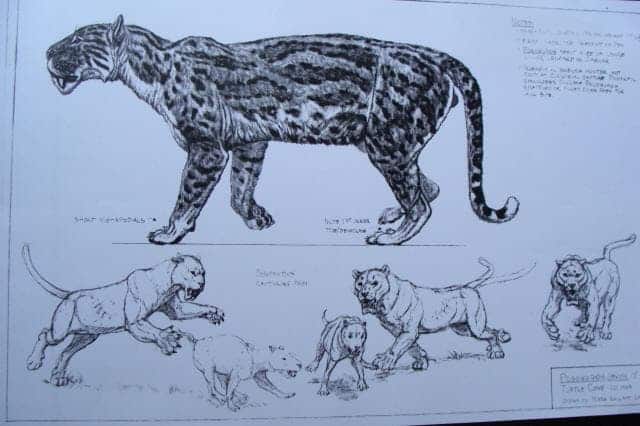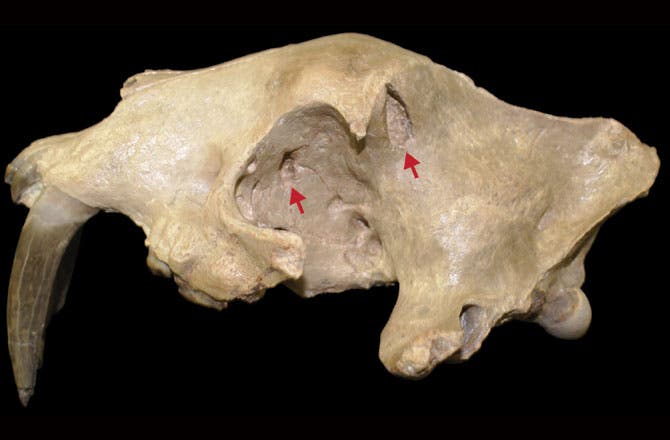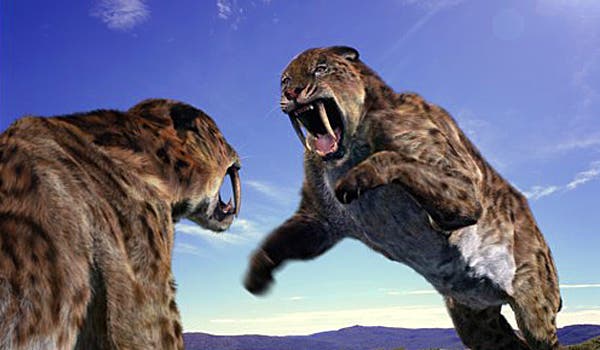
Looking close at suspicious marks and cuts present in the skulls of saber-tooth like cats which roamed North America millions of years ago, paleontologist Clint Boyd of the South Dakota School of Mines and Technology found what he believes are clear signs that the animals used to ambush and kill their own kind.
Fierce predators native to North American that lived some 32-34 million years ago, Nimravids are a group of extinct saber-toothed felids also known as false saber-tooths. In 1936 a peculiar skull belonging to such a cat exhibited bite marks made by the same animal’s long canine teeth. Not too much attention was given to the fact, but in 2010 a girl hiking through the Badlands National Park found a nimravid skull which also bore nimravid bite marks. Boyd, who was working at the park at that time, took interest in the find and decided to examine other skulls for collections all over the country as well.

“Some of the best specimens with bite marks were right in front of people,” he said. “Older specimens did not show the bite marks until they were cleaned up.” Some actually still had dirt in the holes made by the bite marks and others had had the holes repaired by curators unaware of their significance.
“What we found is that these bite marks are a lot more common than previously thought.”
With so many clear signs of nimravids murdered by their own kind there was no doubt that the animals were competing with each other in a highly aggressive manner. Skull analysis revealed another import insight too: all attacks thus far described were made by ambush, from behind. Kills were made either by inserting a fang into an eye socket or puncturing the skull.

A nimravid’s canine teeth were its biggest and most valuable asset, as well as its most vulnerable. If they broke, the cats would have surely been doomed, killed either by starvation or other predators. That’s why there has been no attested nimravid bite mark on its prey’s skulls. Instead the cats used the canines to tear out the soft tissues in the throats of their prey and would have been careful not to bang them on bone, which might have damaged their most important hunting weapon.
Fatal nimravid bite marks are found on a surprising 10 percent of nimravid skulls in three species of nimravids over a range of four million years. Why? Because it’s worth the risk when dealing with competitors. They were still careful not to damage their canines, though, since most attacks are directed towards the eye socket. Museums often present illustrated depictions of rivaling nimravids facing each other in open plain. This likely needs revision, instead a more accurate painting would depict an ambush scene.
“It’s very hard to get behavior from fossils,” said Kurt Spearing, a researcher at Morningside College in Sioux City, Iowa, who works on fossil cats and their close relatives and was not directly involved in Boyd’s work.
But in this case, he agrees that the behavior of nimravids is remarkably clear: “These guys were incredibly aggressive towards each other.”
via Discovery






